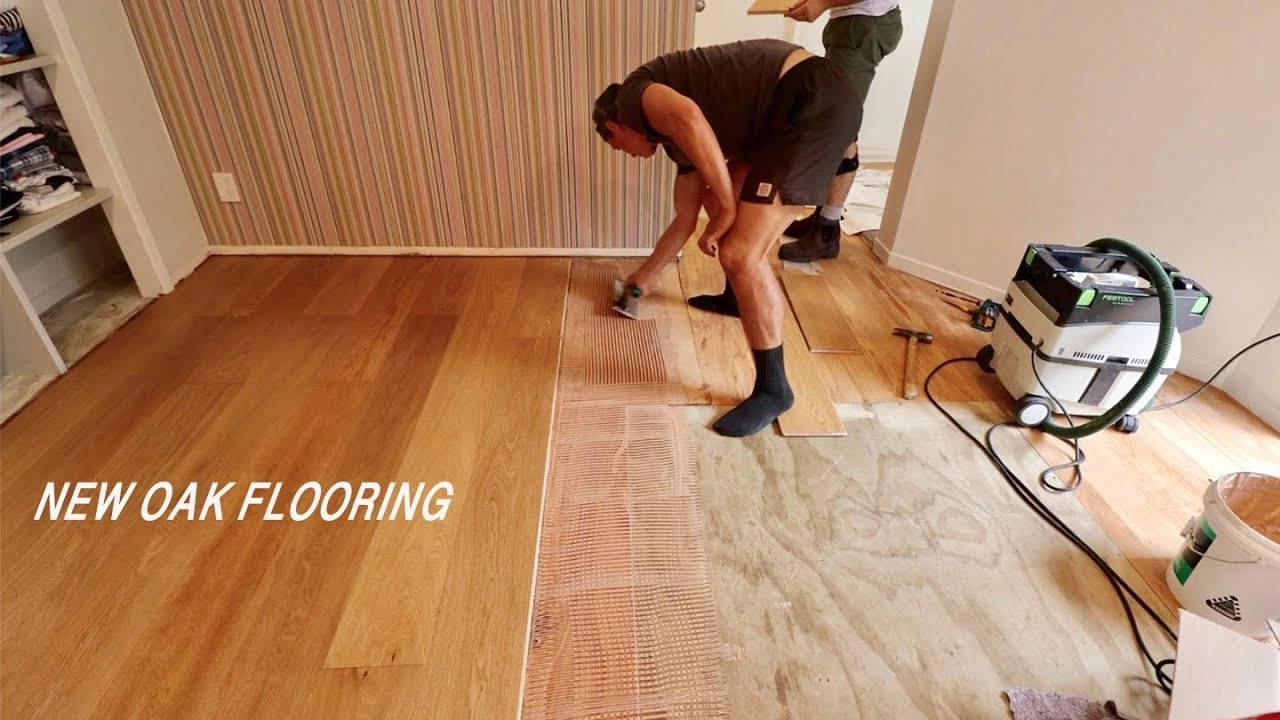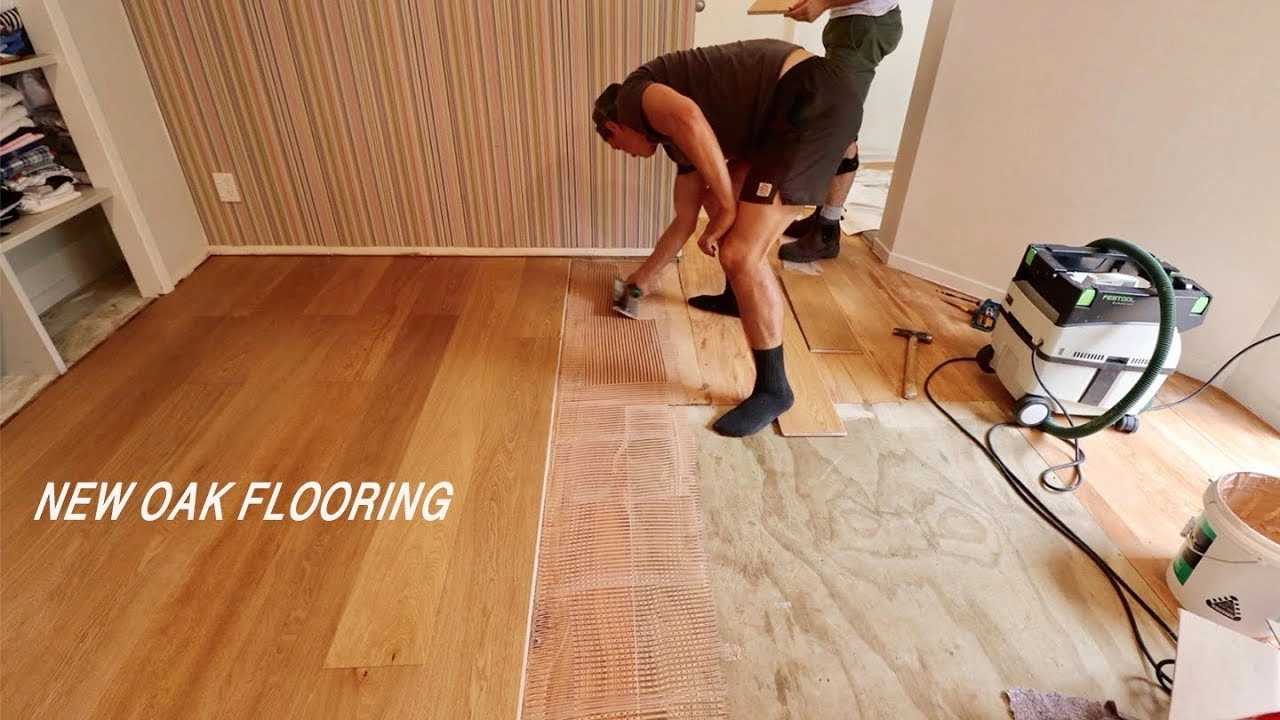Best wood floor adhesive for uneven subfloor? Finding the right adhesive is crucial for a successful installation. You need a product that flexes and compensates for imperfections. This ensures your floor stays stable and beautiful for years.
Many adhesives exist, but not all perform equally well on uneven surfaces. Look for products specifically designed for this purpose. Read reviews and compare options before making a purchase. Proper preparation of the subfloor is also vital.
Conquer Uneven Floors Best Wood Adhesive

Laying hardwood floors over an uneven subfloor presents a unique challenge. Getting a perfectly flat surface is crucial for a long-lasting, beautiful floor. The right adhesive is your key to success. Choosing the best wood floor adhesive for uneven subfloors requires careful consideration of several factors, including the type of wood flooring, the extent of the subfloor imperfections, and the overall project budget. Let’s explore some top contenders.
Product 1: Loctite PL Premium Construction Adhesive
Loctite PL Premium is a popular choice for many flooring projects. Its strong bond and versatility make it suitable for various substrates, including concrete, plywood, and even some types of existing flooring. The adhesive’s thick consistency helps to fill minor gaps and imperfections, making it a good option for slightly uneven subfloors. It also boasts a relatively fast curing time, allowing for quicker project completion. However, it is crucial to prepare the subfloor properly; substantial unevenness will still need to be addressed before applying the adhesive. Remember that, like any adhesive, achieving a completely level floor surface using only adhesive will require an exceptionally smooth subfloor. If you have larger issues you will need another method such as a self-leveling compound.
-
Features:
- Strong initial tack
- Excellent gap-filling capabilities
- Versatile application
- Relatively fast curing time
- Good for interior wood flooring applications.
-
Pros:
- Affordable
- Readily available at most home improvement stores.
- Easy to use.
-
Cons:
- Not suitable for severely uneven subfloors.
- Requires careful application to avoid gaps.
- Might not be ideal for large-scale projects.
Product 2: Bostik Green Label All Purpose Adhesive
Bostik Green Label is known for its environmentally friendly formulation, making it a popular choice for those conscious of environmental impact. This adhesive offers a good balance between strength and flexibility, making it suitable for various wood flooring types. Its performance on slightly uneven surfaces is acceptable, provided the imperfections are relatively small and the subfloor is properly prepared. It’s a great choice if sustainability is a priority in your project, but you must address larger issues like significant subfloor dips or rises before attempting installation. This is another adhesive where a completely level surface is only achievable with a very smooth subfloor initially. If you plan to use this as the best wood floor adhesive for uneven subfloors, ensure proper preparation.
-
Features:
- Low VOC formulation.
- Good adhesion.
- Flexible bond.
- Environmentally friendly.
-
Pros:
- Safer for indoor use.
- Reduced odor.
- Acceptable for minor subfloor imperfections.
-
Cons:
- Not ideal for severely uneven subfloors.
- May require longer drying time than some alternatives.
- Might not be as strong as other construction adhesives.
Product 3: Titebond III Premium Wood Glue
While traditionally known for woodworking projects, Titebond III has gained popularity as a wood flooring adhesive. Its excellent bonding strength and water resistance make it a strong contender. It’s best suited for smaller areas or projects where precision and detailed work are required. The ability of this glue to allow for movement is invaluable for wooden flooring, but you need to remember it’s not a suitable choice for severely uneven subfloors. If you are looking for the best wood floor adhesive for uneven subfloors, this would only be suited for very minor imperfections.
-
Features:
- Excellent bonding strength.
- Water resistance.
- Superior gap-filling characteristics compared to other wood glues
- Durable bond.
-
Pros:
- Versatile glue.
- Reliable bonding in most applications.
- Readily available.
-
Cons:
- Not designed for large-scale flooring applications.
- Not the best for extremely uneven subfloors.
- Requires precise application.
Product 4: DAP Weldwood Construction Adhesive
DAP Weldwood is a heavy-duty construction adhesive known for its powerful bonding strength and versatility. This adhesive can work effectively on uneven subfloors, but only when dealing with small irregularities. Its thick consistency helps fill in minor gaps, ensuring a secure hold. However, for significant subfloor issues, you’ll likely need a separate leveling process before applying the adhesive. Remember the best wood floor adhesive for uneven subfloors is ineffective if the underlying problems aren’t fixed. This is a powerful adhesive and a good choice for those with DIY experience.
-
Features:
- High initial grab.
- Strong bond.
- Excellent gap-filling.
- Versatile application.
-
Pros:
- Durable adhesive.
- Relatively easy application.
- Widely available.
-
Cons:
- Not ideal for highly uneven surfaces.
- Clean-up can be challenging.
- May require longer drying times than other products.
Product 5: Henry 558 All Purpose Construction Adhesive
Henry 558 boasts excellent adhesion to numerous substrates, including concrete, plywood, and various types of wood flooring. Its high-performance formula is designed for heavy-duty applications. While it can handle some degree of subfloor unevenness, it’s essential to have a relatively smooth surface for optimal results. Significant dips or bumps still require a pre-leveling step. Henry 558 represents a strong option but is not the best wood floor adhesive for uneven subfloors if the unevenness is significant. You’ll need to level those issues first.
-
Features:
- High-strength bond.
- Moisture resistance.
- Versatile.
- Excellent adhesion to different materials.
-
Pros:
- Heavy-duty performance.
- Suitable for interior/exterior use (check specific product details).
- Durable bond.
-
Cons:
- Not suitable for severely uneven subfloors without prior leveling.
- Can be challenging for beginners.
- May require specialized tools for larger projects.
Choosing the best wood floor adhesive for uneven subfloors hinges on properly evaluating the condition of your subfloor. Minor imperfections might be addressed with a strong adhesive, but severe unevenness necessitates a leveling process before adhesive application. Always carefully review the manufacturer’s instructions and prepare the subfloor correctly to ensure a successful installation. Investing in the right preparation, including levelling compounds if needed, will ensure the longevity and beauty of your new hardwood floor. The best wood floor adhesive for uneven subfloors will deliver only if you’ve taken care of the foundation. Remember to always follow the manufacturer’s instructions and safety precautions. Selecting the best wood floor adhesive for uneven subfloors requires careful consideration of your project’s specifics.
Uneven Subfloor Best Wood Floor Adhesive Click Here For Tips

Laying wood flooring on uneven subfloors is a common challenge for DIYers and professionals alike. A wobbly floor leads to squeaking, cracking, and ultimately, a ruined installation. The solution? Choosing the right adhesive. The best wood adhesive for conquering uneven floors needs to be strong, flexible, and capable of filling small gaps.
We’ll explore what makes an adhesive ideal for this purpose. Think of it like this: you need a powerful bond that can compensate for the imperfections of your subfloor. A rigid adhesive will just crack under stress. Flexibility is key.
What should you look for?
-
Strong Initial Grab: This ensures your planks stay put during the initial setting period, preventing slippage.
-
Excellent Long-Term Bond: You want an adhesive that holds strong over time, resisting the constant wear and tear of foot traffic.
-
Gap-Filling Properties: A good adhesive will fill minor imperfections in the subfloor, creating a level surface for your wood flooring.
-
Suitable for Wood Type: Ensure the adhesive is compatible with your specific type of wood flooring. Solid hardwood, engineered wood, and bamboo all have different requirements.
-
Easy Application: While strength is essential, a user-friendly adhesive simplifies the installation process, making the job easier and less time-consuming.
Many adhesive manufacturers produce products specifically designed for uneven subfloors. These often incorporate advanced polymers that provide superior flexibility and gap-filling capabilities. Read product descriptions carefully, paying attention to their stated suitability for uneven surfaces. Don’t just rely on the brand name; look for concrete descriptions of performance characteristics.
Choosing the right Conquer Uneven Floors Best Wood Adhesive is half the battle. Proper preparation is equally crucial. Before you start, take the time to thoroughly clean your subfloor, removing any dust, debris, or old adhesive. Leveling severely uneven areas with a self-leveling compound might be necessary before applying the adhesive. This ensures a solid foundation. A well-prepared subfloor will maximize the performance of your chosen adhesive and contribute to a long-lasting, beautiful wood floor. Remember, taking these preparatory steps will pay off significantly in the longevity of your flooring project. Cutting corners will likely lead to future issues.
One important consideration is the type of wood flooring you are using. Solid hardwood flooring can be more susceptible to problems on uneven floors compared to engineered wood. The choice of Conquer Uneven Floors Best Wood Adhesive should therefore be tailored to the specific needs of your flooring material.
Consider the climate in your home, too. Extreme temperature fluctuations can impact adhesive performance. Some adhesives are formulated to be more resistant to these changes than others. Check the manufacturer’s specifications carefully, paying attention to recommended temperature ranges for application and curing. This extra attention will help to avoid problems down the line. Investing in the best product and proper installation will save you time, effort, and potentially, costly repairs in the future. Remember, a quality Conquer Uneven Floors Best Wood Adhesive is an investment in the longevity and beauty of your floor.
Best Wood Floor Adhesive for Uneven Subfloors: Q&A
What type of adhesive works best on uneven subfloors?
A high-performance, flexible adhesive designed for wood flooring is your best bet. These adhesives can bridge gaps and level minor imperfections.
Should I use a self-leveling compound before applying adhesive?
Yes, for significant unevenness, a self-leveling compound will create a smoother surface for better adhesive bonding. This ensures a stable floor.
Can I use standard wood glue for an uneven subfloor?
No. Standard wood glue lacks the flexibility and gap-filling properties needed to handle uneven surfaces. It will fail, leading to floor problems.
How important is proper subfloor preparation?
It’s crucial. Proper preparation, including cleaning and repairing any major damage, maximizes adhesive performance and the lifespan of your floor.
What if my subfloor has significant dips and hollows?
For large irregularities, consider repairing those first before using a self-leveling compound and adhesive. You need a solid base.
Does the adhesive type affect the wood flooring type?
Yes. Different wood flooring types (solid, engineered) may require specific adhesive types. Check manufacturer recommendations.
What should I look for in a high-quality adhesive?
Look for strong adhesion, flexibility, good gap-filling ability, and ease of application. Always read the product information.
How much adhesive should I use?
Follow the manufacturer’s instructions for application rate. Using too little results in poor adhesion; too much causes problems.
Conclusion
Choosing the right adhesive is crucial for a successful wood floor installation, especially on uneven subfloors. We explored several high-performance options designed to bridge gaps and provide superior adhesion. Remember to always prepare your subfloor properly before application.
Consider the specific needs of your project. Factors like moisture levels and the type of wood flooring will heavily influence your adhesive selection. Read product labels carefully and follow the manufacturer’s instructions.
Ultimately, a well-chosen adhesive ensures a long-lasting, beautiful floor. Invest wisely. Your floor’s longevity depends on this crucial step. Share your experiences and preferred adhesives in the comments below. Let’s discuss! Also, spread the word—share this post on social media to help others.




